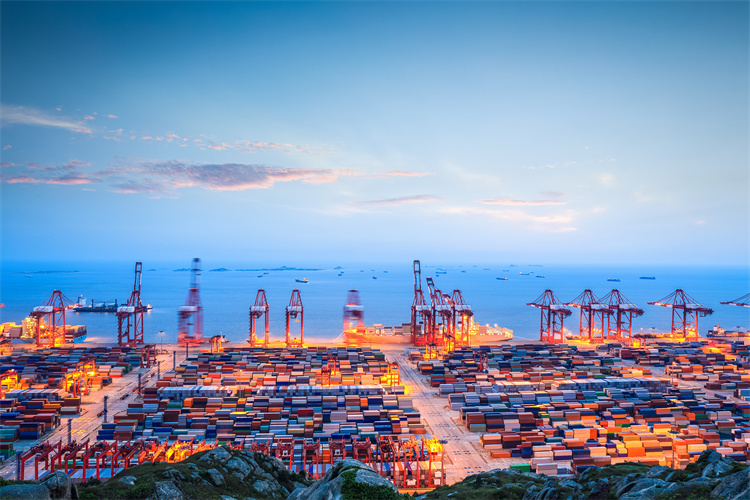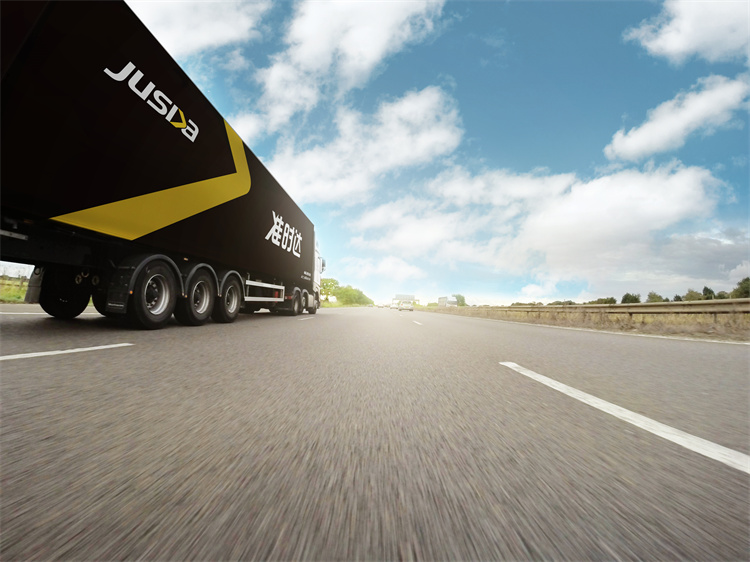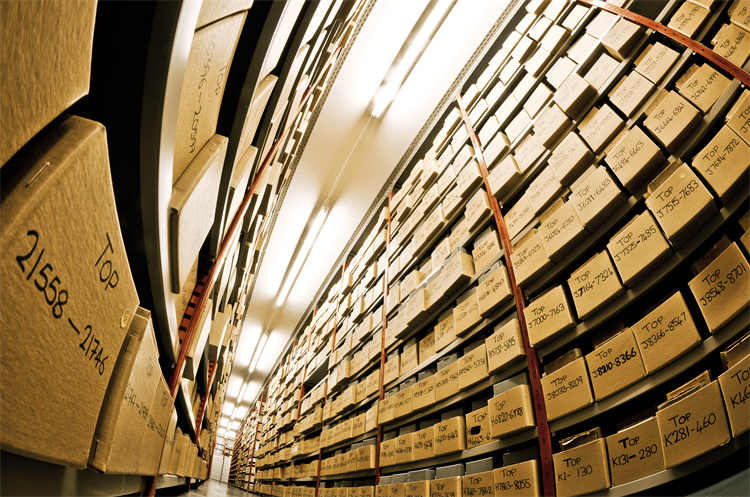Emerging Trends Transforming Customized Logistics Services in 2025

You are important in making modern logistics successful. The need for customized logistics services is growing fast. Businesses want to meet customer needs quickly. The logistics field is changing rapidly with new ideas like robots and eco-friendly methods. By 2025, U.S. logistics may grow by 15%. This shows more creativity and flexibility in the industry. Global logistics earnings might hit $787.54 billion by 2032. These changes are reshaping how supply chain problems are solved.
Key Takeaways
AI and machine learning help by guessing needs and planning routes. This saves money and makes deliveries faster.
Robots and drones make work quicker in warehouses and deliveries. This means faster service and happier customers.
Green methods, like using less carbon and reusing materials, help the planet. They also save money and use resources better.
Technological Innovations in Customized Logistics Service

AI and Machine Learning for Smarter Logistics
AI and machine learning are changing how logistics works. These tools use data to predict needs, plan routes, and manage inventory better. For example, AI can cut transport costs by 25% and save 20% on fuel. It also makes demand predictions 50% more accurate, helping avoid too much or too little stock.
AI does more than save money. It speeds up deliveries by 30% and boosts customer happiness by 22%. Using AI in logistics makes operations more reliable and efficient. Big companies like Amazon and FedEx already use AI to improve their systems, setting an example for others.
Category | Improvement Metrics |
|---|---|
Cost Savings | Route savings: 29% to 42% |
Transportation cost reductions: 10-25% | |
Fuel consumption reductions: 10-20% | |
Average logistics cost reductions: 15-30% | |
Efficiency Gains | |
Inventory levels decreased by 35% | |
Warehouse throughput increased by 40% | |
Accuracy & Reliability | Demand forecasting accuracy improved by 50% |
Inventory accuracy reached over 98% | |
Service Levels & Satisfaction | Customer satisfaction scores increased by 22% |
Robots and Automation in Warehouses and Deliveries
Automation is becoming a big part of logistics. Robots in warehouses help with picking, packing, and sorting. This makes work faster and reduces mistakes. For deliveries, drones and self-driving vehicles are making services quicker and more dependable.
Companies like UPS and Amazon show how useful automation is. UPS saves $50 million for every mile cut from delivery routes. Amazon speeds up inventory by 75% using its Sequoia system. These tools lower costs and make customers happier with faster deliveries.
Company | Efficiency Improvement | Cost Reduction | Other Benefits |
|---|---|---|---|
UPS | 1 mile savings = $50M | $300-$400M/year | ORION system |
FedEx | 10% reduction | N/A | AI solutions |
DHL | 25% energy cost | 20% maintenance | Digital twin |
Amazon | 75% inventory speed | N/A | Sequoia system |
General | 40% productivity | N/A | AI impact |
Blockchain for Clear and Honest Supply Chains
Blockchain helps make supply chains more trustworthy. It keeps a secure record of shipments that everyone can see. This builds trust by showing every step of the process clearly.
Blockchain also stops fraud and fake goods, which are big problems in trade. It improves tracking, follows rules better, and strengthens partnerships. Many companies now use blockchain to make their supply chains more open and efficient.
IoT for Real-Time Tracking and Better Decisions
The Internet of Things (IoT) is changing logistics with real-time tracking. Sensors and GPS devices show shipment conditions, locations, and delivery times. This helps businesses plan better and avoid delays.
IoT in logistics is growing fast, with a market size of $119.68 billion expected by 2030. It improves visibility, inventory management, and decision-making. Using IoT tools makes logistics more efficient and saves money while meeting market needs.
Aspect | Details |
|---|---|
Market Size (2023) | $46.57 billion |
Market Size (2024) | $53.25 billion |
Projected Market Size (2030) | $119.68 billion with a CAGR of 14.43% |
Advantages | Enhanced visibility, efficiency, cost reduction, real-time monitoring, better inventory management, improved decision-making. |
Sustainability and Green Logistics Trends

Carbon-Neutral Operations and Green Transportation
You help make logistics better for the environment. Carbon-neutral operations and green transportation aim to lower pollution and use cleaner energy. Urban rail transit is a great example of this change. By 2022, 55 cities had over 10,287 kilometers of rail. This helped cut carbon emissions and reduce traffic jams.
Cars cause 60% of city air pollution. Using low-emission public transport, like urban rail, makes cities cleaner. Choosing sustainable transport improves air quality and makes urban life healthier.
Evidence Type | Description |
|---|---|
Carbon Emission Reduction | Urban rail transit lowers emissions in cities with big rail networks. |
Traffic Congestion Alleviation | Rail systems reduce reliance on polluting vehicles, easing traffic jams. |
Air Pollution Impact | Cars cause 60% of city air pollution, showing the need for greener options. |
Circular Supply Chains for Waste Reduction
Circular supply chains focus on cutting waste and reusing resources. These systems track products to allow recycling or repurposing. Sharing clear data helps find materials that can’t be recycled, improving waste handling.
Technology helps circular supply chains work better. It boosts teamwork and reduces the need for new materials. For items that spoil quickly, better data helps manage inventory and waste. Supporting sustainability creates a logistics system that saves resources and protects the planet.
Clear data finds non-recyclable materials for better waste handling.
Technology improves teamwork and cuts the need for new resources.
Better inventory management reduces waste, especially for items that spoil.
JUSDA's Role in Promoting Sustainable Warehousing Solutions
JUSDA leads in green logistics with eco-friendly warehouse solutions. It has over 2.5 million square meters of warehouse space worldwide. JUSDA uses advanced tools to lower environmental harm. Its clean room facilities meet strict green standards for safe operations.
JUSDA’s eVMI and JusLink systems track inventory in real time. This saves resources and cuts waste. These tools improve efficiency and help businesses adopt sustainable practices. JUSDA supports industries like electronics and automotive with tailored green solutions.
🌱 Tip: Eco-friendly warehouses save money and support global environmental goals.
Customer-Focused Solutions in Third-Party Logistics Services 2025
Custom Delivery and Flexible Timing
You help shape the future of logistics by wanting custom delivery. People now expect options like same-day delivery or pick-up spots. Automation helps companies offer faster and more reliable deliveries. Smart routing tools make flexible schedules possible, improving convenience.
Flexible warehouses let businesses adjust quickly to market changes. This keeps customers happy and supports the need for personalized logistics. As online shopping grows, companies depend more on third-party logistics to meet demands. By focusing on personalization, deliveries become smoother and easier for you.
Live Tracking and Smart Delivery Updates
People want live updates about their shipments. Real-time tracking gives clear information and control over deliveries. Smart tools plan delivery routes better by checking traffic and weather. This saves time and money. For example, DHL’s Smart Truck program cut miles driven by 15%, saving fuel and lowering pollution.
Delivery updates through email, texts, or apps improve communication. Many people in Europe prefer email updates, while others like texts or apps. These updates help avoid delays and make deliveries more efficient. Live tracking keeps you informed, making logistics more dependable and customer-friendly.
Easy Returns and Reverse Logistics with JUSDA Warehouses
Good reverse logistics make returns simple and stress-free. JUSDA uses smart tools like eVMI and JusLink to track inventory and manage returns. These systems make the process clear and smooth. JUSDA also offers special solutions for industries like electronics and cars, improving the return experience.
Easy returns build customer trust and cut waste, supporting green practices. JUSDA’s worldwide warehouses make reverse logistics fast and hassle-free. By focusing on returns, JUSDA sets a high standard for third-party logistics in 2025.
Enhancing Supply Chain Resilience with Emerging Trends
Predictive Analytics for Risk Mitigation
Predictive analytics helps spot problems before they happen. It uses past data to find risks like late shipments or supplier issues. These tools help you plan better and avoid surprises. For example, special methods like regression analysis predict risks early. Neural networks also suggest fixes before problems grow.
Modern tools measure risks as they happen. They show how likely disruptions are and help you act fast. This improves supply chain tracking and keeps logistics running smoothly.
Models predict delays and other problems.
Past data helps find trustworthy suppliers.
Smart tools like neural networks make risk checks better.
Diversification of Suppliers and Routes
Using one supplier or route can be risky. Having more suppliers and routes makes your supply chain stronger. It helps you adjust quickly when challenges arise. A bigger supplier network gives flexibility and handles changes better.
Benefit | Description |
|---|---|
Shares orders across many suppliers to avoid big problems. | |
Boosts quality & ideas | Creates competition, leading to better prices and new ideas. |
Adds flexibility | Makes it easier to grow or shrink operations. |
Watching supplier performance closely helps catch risks early. Using data to spot problems keeps deliveries steady and builds teamwork for improvements.
Agile Supply Chain Models Powered by JUSDA's JusLink Platform
Agility means being quick and flexible in logistics. JUSDA’s JusLink platform gives real-time updates and smart tools to manage supply chains. It uses IoT and AI to track every part of the process and respond fast to issues.
JusLink makes supply chains more flexible by connecting suppliers and buyers easily. It predicts needs, saves money, and speeds up deliveries. With JusLink, you can adjust to market changes and keep customers happy.
🚀 Tip: Use agile systems to stay strong and ready for changes in logistics.
Global Trade and Regulatory Impacts on Logistics Trends
Adjusting to Changing Trade Rules
Trade rules decide how goods cross borders. Changes like tariffs or trade deals affect logistics. Higher tariffs make shipping more costly for logistics companies. Good trade deals, however, lower costs and make processes easier.
Trade barriers and protectionism slow down imports and exports. These issues raise costs and make global supply chains less competitive. Knowing these effects helps businesses adjust and keep operations smooth.
Evidence Description | Impact on Logistics |
|---|---|
Tariffs raise shipping costs for 3PL providers. | Higher costs for logistics companies. |
Good trade deals simplify operations. | Lower costs and better efficiency. |
Protectionism slows goods movement. | Delays in imports and exports. |
Trade barriers cause shipping delays. | Slower logistics processes. |
Rising costs hurt global supply chains. | Harder to keep prices competitive. |
Growth and Challenges in Cross-Border Online Shopping
Online shopping across borders is growing fast. Urbanization, higher incomes, and new technology drive this growth. Businesses can now reach customers worldwide, but challenges remain.
High shipping costs, customs rules, and tracking deliveries are common problems. For example, 51% of companies struggle with customs, and 46% have tracking issues. Managing returns and delivery expectations adds to the difficulty. Solving these problems improves customer satisfaction and smooth operations.
Reasons for growth:
More people living in cities.
Higher incomes.
New tech like blockchain.
Problems faced:
Customs rules: 51%.
Delivery tracking: 46%.
Meeting delivery expectations: 43%.
Cross-border shipping: 30%.
Handling returns: 24%.
JUSDA's Help with Customs and Rules
Customs rules differ by region, making them tricky to follow. JUSDA uses smart tools and global knowledge to make this easier. Its JusLink platform tracks shipments and speeds up customs clearance. It combines data from many systems to avoid delays and improve accuracy.
JUSDA works closely with customs officials to handle tough regulations. Its solutions help businesses deliver goods on time and follow rules. Using JUSDA’s services makes logistics simpler and supports global growth.
🌍 Note: Good customs management avoids delays and builds trust with partners worldwide.

JUSDA Solutions
To provide you with professional solutions and quotations.
New ideas are changing how logistics works today. Smart tools make operations better, green methods help the Earth, and focusing on customers improves happiness. These changes help businesses stay strong in the market. JUSDA uses modern systems to keep logistics ready for the future. Be prepared to grow and succeed in this fast-changing field.
See Also
Top Five Trends Shaping Future Supply Chain Effectiveness
Transforming Logistics: The Role of AI in Supply Chains
Understanding Logistics Risks: Key Trends to Watch
Exploring 2024: Innovations in Sea Freight Logistics
Supply Chain Innovations: Transforming the Future of Logistics
